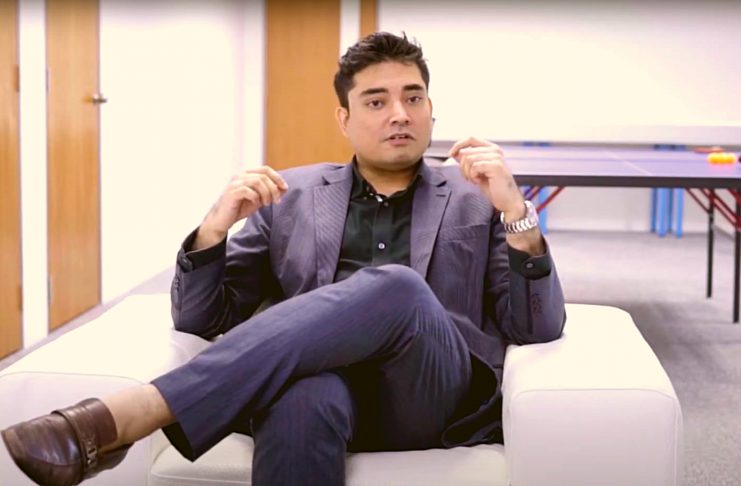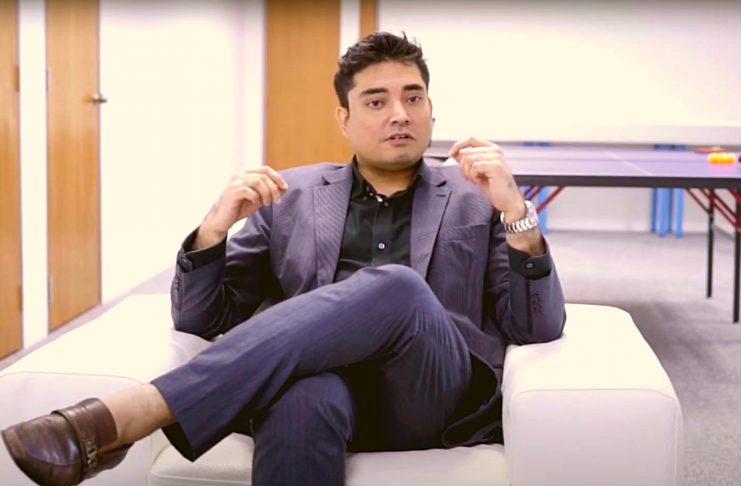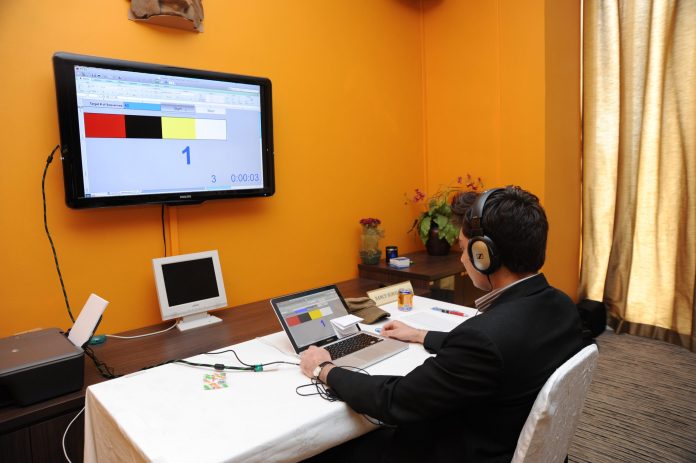Unlocking the Rainbow: Sancy Suraj’s Guinness World Record for the Longest Color Sequence Memorized
Sancy Suraj is a name that has become synonymous with extraordinary memory feats. The memory expert and corporate trainer has broken multiple world records, including the Guinness World Record for the longest color sequence memorized. In this article, we delve into Sancy’s journey to achieving this remarkable feat, as well as his techniques for improving memory and his plans for the future of the field.

What motivated you to attempt the Guinness World Record for the longest color sequence memorized, and how did you prepare for the challenge?
I was motivated to attempt the Guinness World Record for the longest color sequence memorized because I wanted to challenge myself and push the limits of what I thought was possible. I had previously represented Singapore in the World Memory Championships in 2011 and had a strong interest in memory improvement and mental performance. I knew that attempting this world record would be a significant challenge, but I was confident that I could achieve it with the right training and preparation.
To prepare for the challenge, I spent several months practicing and refining my memory techniques. I focused on developing my visual memory, which is essential for remembering colors and other visual stimuli. I also worked on improving my concentration and focus, which are crucial for maintaining attention over long periods.
During the actual attempt, I employed a variety of memory techniques, including the method of loci, which involves associating visual images with specific locations in a familiar environment. This allowed me to link each color in the sequence to a specific location in my mental map, making it easier to recall the sequence in the correct order.
Overall, the key to my success was a combination of mental preparation, training, and the use of effective memory techniques. I was motivated by a desire to push myself to new heights and to demonstrate the potential of memory improvement and mental performance training. I hope that my achievement will inspire others to pursue their own goals and push the limits of their own cognitive abilities.
Can you describe your experience during the record-breaking attempt, and how did it feel to achieve such a remarkable feat?
As I stood on the stage in front of a panel of judges and an audience of spectators, I felt a mixture of nervousness and excitement. It was the day of my Guinness World Record attempt for the longest color sequence memorized, and I had been preparing for this moment for months.
I took a deep breath and began reciting the colors, one after another, trying to keep my focus and concentration sharp. As the sequence got longer, the pressure began to mount, and I could feel my heart racing. But I kept going, relying on the techniques and strategies I had learned through years of memory training.
Finally, after what seemed like an eternity, I reached the end of the sequence and the judges confirmed that I had indeed broken the record. The feeling of accomplishment was indescribable – I had worked so hard for this moment, and it was all worth it.
Looking back on that experience, I am filled with a sense of pride and gratitude. It was an incredible achievement, but it was also a testament to the power of the human mind and the potential we all have to push ourselves beyond our limits.
As a memory expert and corporate trainer, how do you believe that developing strong memory skills can benefit individuals and organizations?
As a memory expert and corporate trainer, I strongly believe that developing strong memory skills can greatly benefit both individuals and organizations. For individuals, having a good memory can improve their academic and career performance, boost their confidence and self-esteem, and enhance their overall quality of life. With strong memory skills, individuals can easily recall important information, remember people’s names, and even learn new languages or skills quickly.
In terms of organizations, memory training can enhance employee productivity and efficiency, leading to increased profitability and success. By improving their memory skills, employees can remember important deadlines, recall client information and feedback, and better manage their time and resources. Memory training can also help employees better retain important training and educational materials, leading to better job performance and job satisfaction.
Moreover, memory training can also help individuals and organizations adapt to the ever-changing landscape of the modern world, which is full of information overload and constant distractions. With strong memory skills, individuals and organizations can more effectively process and retain large amounts of information, make better decisions, and stay focused on their goals and objectives.
In conclusion, developing strong memory skills can provide significant benefits for both individuals and organizations. By investing in memory training and improvement, individuals and organizations can enhance their cognitive abilities, improve their performance, and achieve greater success in all areas of their lives.
“Memory training is not just a tool for individuals to improve their personal lives, but also a powerful tool for organizations to boost their performance and achieve greater success.”
Can you walk us through some of the techniques you use to help others improve their memory skills, and how effective do you find these techniques to be?
As a memory expert and corporate trainer, I have developed and refined a variety of techniques to help individuals and organizations improve their memory skills. One of the most effective techniques I use is called the Memory Palace, also known as the Method of Loci. This technique involves mentally placing information that needs to be remembered in different locations within a familiar setting, such as a childhood home or a favorite park. By visualizing the information in these locations, the brain is able to more easily recall the information when needed.
Another technique I use is called Chunking, which involves breaking down larger pieces of information into smaller, more manageable chunks. For example, a phone number can be easier to remember if it is broken down into smaller chunks of three or four numbers. This technique allows the brain to process the information more effectively, leading to better recall.
Visualization is also a powerful technique for memory improvement. By creating vivid mental images of the information that needs to be remembered, the brain is better able to store and retrieve the information. For example, if someone needs to remember a list of grocery items, they could imagine each item in their mind and visualize themselves picking it up from the store shelf.
Overall, I have found these techniques to be highly effective in improving memory skills. However, it’s important to note that everyone has their own unique learning style and may respond differently to different techniques. As a trainer, I work closely with individuals and organizations to identify the techniques that work best for them and help them achieve their memory improvement goals.
What advice would you give to individuals who want to improve their memory skills, and what are some common misconceptions about memory that you try to dispel?
As a memory expert and Guinness World Record holder for memorizing the longest color sequence, I am often asked for advice on how to improve memory skills. My first piece of advice is to start with the basics: getting enough sleep, eating a balanced diet, and staying physically active. These are all factors that contribute to overall brain health, which is essential for memory retention and recall.
In terms of specific memory techniques, one of the most effective strategies is to use visualization. This involves creating mental images of the information you want to remember, which helps to activate different areas of the brain and make the information more memorable. Another useful technique is to use association, linking new information to something you already know. For example, if you want to remember a new person’s name, you can associate it with a physical feature or a personal trait that stands out to you.
One common misconception about memory is that it is solely dependent on genetics and cannot be improved. However, research has shown that memory is a skill that can be trained and strengthened, much like a muscle. Another misconception is that all memory techniques work the same for everyone. In reality, different techniques may work better for different individuals based on their learning style and preferences.
Ultimately, the key to improving memory skills is practice and consistency. Like any skill, it takes time and effort to see improvement. By incorporating healthy habits and effective memory techniques into your daily routine, you can enhance your ability to retain and recall information, leading to greater success in both personal and professional endeavors.
“Your memory is not a fixed trait, but a skill that can be trained and improved. By adopting healthy habits and effective memory techniques, you can unlock the full potential of your brain and achieve greater success in all areas of your life.”
Sancy’s motivation for attempting the Guinness World Record for the longest color sequence memorized was a desire to push the boundaries of what he believed was possible with memory. He spent months preparing for the challenge, using a variety of memory techniques and drills to improve his recall abilities. During the actual attempt, Sancy felt a mix of nervousness and excitement, but he relied on his training to stay focused and maintain his memory.
As a memory expert and corporate trainer, Sancy believes that developing strong memory skills can benefit individuals and organizations in countless ways. He uses a range of techniques to help others improve their memory skills, including mnemonic devices, visualization techniques, and memory palace techniques. Sancy has found these techniques to be highly effective, and he is constantly refining his methods to help individuals and organizations achieve their memory-related goals.
When asked for advice on improving memory skills, Sancy emphasizes the importance of practice and consistency. He also works to dispel common misconceptions about memory, such as the idea that some people are simply born with better memory than others. Instead, Sancy believes that memory is a skill that can be developed and improved with the right techniques and training.
Looking to the future, Sancy has plans for more world record attempts and memory-related projects. He aims to continue pushing the boundaries of what is possible with memory, and he is passionate about advancing the field of memory improvement through his work as a trainer and consultant.

- What are your plans for future world record attempts or other memory-related projects, and how do you plan to continue advancing the field of memory improvement?
As a memory athlete and trainer, I am always looking for new challenges and opportunities to push the limits of what the human mind is capable of. While I am proud of my current Guinness World Record for the longest color sequence memorized, I am already thinking about what comes next. One possibility is attempting to break my own record, by memorizing an even longer sequence of colors or by attempting a new memory-related challenge. Another option is to explore new avenues for advancing the field of memory improvement, such as developing new training techniques or partnering with researchers to better understand the science of memory.
One project that I am particularly excited about is my work with Pinnacle Minds, the memory improvement company that I founded. At Pinnacle Minds, we are committed to helping individuals and organizations unlock the full potential of their minds through memory training and other cognitive enhancement techniques. In addition to offering training programs and consulting services, we are also engaged in ongoing research and development aimed at discovering new ways to boost memory performance and mental agility.
Ultimately, my goal is to help people all over the world improve their memory skills and achieve their full potential. Whether it’s through setting new world records or developing new memory improvement techniques, I am always looking for ways to advance the field and make a positive impact on the lives of others. I am excited to see where this journey takes me next, and I look forward to continuing to push the limits of what is possible with the power of the human mind.
“I believe that the human mind is capable of incredible feats, and my passion is to help individuals and organizations tap into that potential through the power of memory training and cognitive enhancement.”
Sancy Suraj’s Guinness World Record for the longest color sequence memorized is a testament to the power of memory techniques and the potential for human achievement. His dedication to improving memory skills and pushing the boundaries of what is possible has inspired countless individuals and organizations. As the field of memory improvement continues to evolve, Sancy will undoubtedly play a crucial role in shaping its future.
